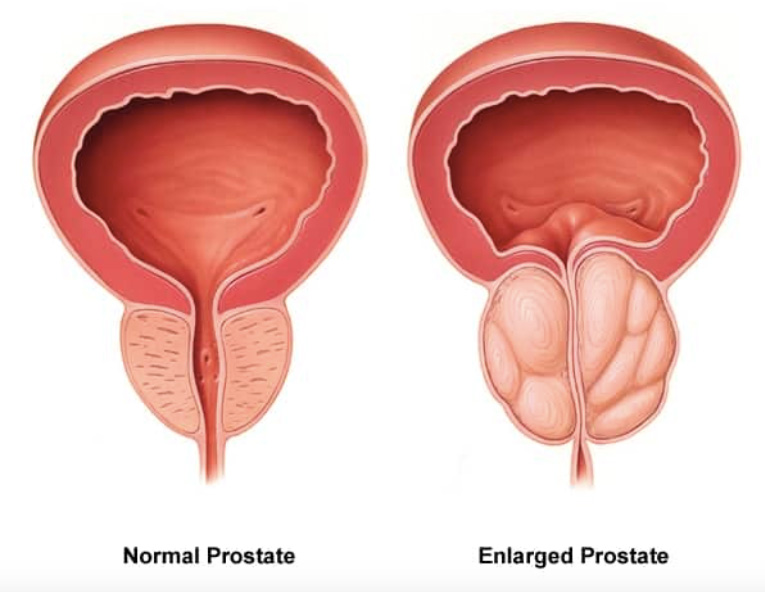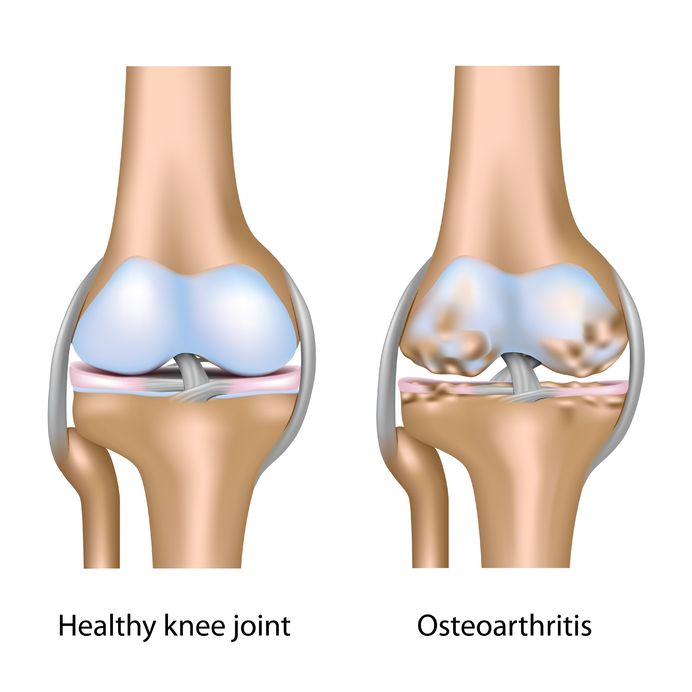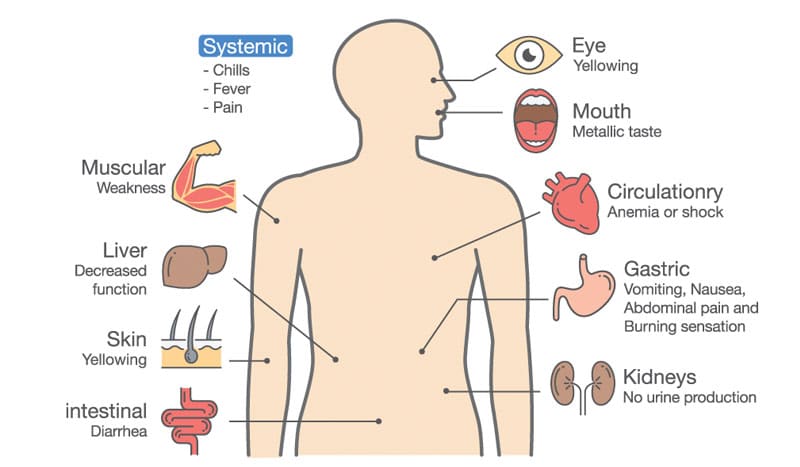Viruses are small infectious agents that are composed of genetic material inside of a protein shell. Viruses can multiply only in living cells of animals, plants, or bacteria. They invade living cells and use them to multiply and produce more viruses. When this occurs, it can kill, damage, or change the cells leading to a viral infection. Viruses are transmitted in various ways such as through swallowing, inhalation, insect bites, sexual transmission, and contaminated blood transfusions. The most common viruses that infect humans include the influenza virus, hepatitis B, adenovirus, herpes virus, Epstein- Barr virus (EBV), cytomegalovirus, and the human immunodeficiency virus (HIV).
General features: All viruses contain genetic material and a protein shell, also called a capsid. Some viruses also have an outer envelope that surrounds the capsid that is derived from the host cell membrane with some viral proteins. The genetic material is composed of nucleic acid that takes the form of RNA or DNA and encodes the genetic information that is unique for each type of virus. The protein shell contains one or more different proteins encoded by the virus genome that is assembled in multiple units. The protein shell protects the viral nucleic acid from digestion by extracellular nucleases and attaches the virion to the host cell membrane which allows its penetration into the host cell. The infective extracellular (outside the cell) form of a virus is called a virion. In special cases with a bacteriophage, the virion also allows the injection of the infectious nucleic acid into the host cell. Viruses lack ribosomes which translate mRNA into protein. Therefore, viruses use the ribosomes of their host cells to translate the viral mRNA into viral proteins.
Viruses come in a variety of shapes and sizes. They are tiny and are measured in nanometers. The majority of viruses cannot be seen with a microscope. The criteria for classifying viruses into families and genera are primarily based on structural considerations. The main criteria are the type of nucleic acid (DNA or RNA) and the presence of a lipid envelope in the outer layer of the virion. Viruses consist of RNA virus, DNA virus and retrovirus.
Viruses lack ribosomes which translate mRNA into protein. Therefore, viruses use the ribosomes of their host cells to translate the viral mRNA into viral proteins. Viruses can infect humans through a variety of sources including ingestion or contact with infected animals. Some viruses can cause infections in both animals and humans. These viruses are carried by arthropods which include lobsters, crabs, spiders, mites, insects, centipedes, and millipedes. The infection is typically through ingestion of the infected lobster or crab, contact with the infected animals, or contact with their fresh urine or feces. Some viruses, such as the influenza virus, can spread between people when coughing, sneezing, or talking. The droplets of the infected person land in the mouths or noses of people who are nearby or can possibly be inhaled into the lungs. Blood-borne viruses such as herpes simplex virus, HPV, HIV, and hepatitis B and C, can be spread from person to person by blood and bodily fluids through sexual intercourse, blood transfusions, or contaminated needles.
RNA Viruses
An RNA virus is a virus that has RNA as its genetic material. This nucleic acid is usually a single-stranded RNA which is either a positive-sense or negative-sense but may be a double-stranded RNA. The negative-sense single strand RNA ((-)ssRNA) have to be copied into complementary positive-strand RNA in the host cell which will serve as the templates for protein synthesis. The group of (-)ssRNA viruses have a very complex genome which includes many human pathogens, like influenza, measles, mumps, respiratory syncytial, or Ebola viruses. All which produce frequent epidemics of disease. The positive-sense single strand RNA ((+)ssRNA) viruses usually contain relatively few genes that are ready to be translated into protein after entering into host cells. (+)ssRNA viruses account for a large fraction of known viruses including many human pathogens such as the hepatitis C virus, West Nile virus, dengue virus, coronaviruses, as well as less clinically serious pathogens such as the rhinoviruses that cause the common cold. Double strand RNA (dsRNA) viruses are a diverse group of viruses that vary widely in host range including human, animals, plants, fungi, and bacteria. Members of this group include the rotaviruses, known globally as a common cause of gastroenteritis in young children, and bluetongue virus, an economically important pathogen of cattle and sheep.
Respiratory: Viruses can attack the respiratory system including infections of the nose, throat, upper airways, and lungs leading to conditions such as a sore throat, sinusitis, and the common cold. These infections can be caused by many different types of viruses such as Influenza viruses (-)ssRNA, coronavirus ((+)ssRNA), or the rhinovirus ((+)ssRNA). Other viral respiratory infections include the flu and pneumonia caused by the influenza virus ((-)ssRNA).
The rhinovirus is a positive-sense single-stranded RNA (+)ssRNA virus. It is the most common viral infectious agent in humans and is the predominant cause of the common cold. Rhinovirus infection proliferates in temperatures of 33–35 °C, the temperatures found in the nose. Rhinoviruses may also cause sore throats, ear infections, sinus infections, pneumonia, and bronchiolitis.
Coronaviruses are also (+)ssRNA viruses that typically affect the respiratory tract of mammals, including humans. They are associated with the common cold, pneumonia, Middle East Respiratory Syndrome (MERS), and Severe Acute Respiratory Syndrome (SARS), and can also affect the gut. The coronavirus disease 2019 (COVID-19) pandemic has caused a sudden and significant increase in hospitalizations for respiratory syndrome with multiorgan disease. COVID-19 is caused by the novel severe acute respiratory syndrome coronavirus 2 (SARS-CoV-2). SARS-CoV-2 is a large, enveloped, positive-sense single-stranded RNA virus and belongs to the same Coronaviridae family with other viruses like SARS and Middle East respiratory syndrome. The SARS-CoV-2 contains a surface glycoprotein also called spike proteins or S protein that studs the viral envelope and is responsible for the tropism it displays as they bind only with specific receptors on the cell surfaces of target organisms. Such receptors include angiotensin-converting enzyme 2 (ACE2) in the respiratory epithelium and other organs such as the arteries, heart, kidney, and intestines. ACE2 is an enzyme attached to the cell surface of the endothelium and functions to lower blood pressure by catalyzing the conversion of angiotensin II (a vasoconstrictor) into angiotensin 1-7 (a vasodilator). Besides for SARS-CoV-2, ACE2 is also the main entry point into cells for some other coronaviruses, including HCoV-NL63 and SARS-CoV-1. The binding of the spike S1 protein to the ACE2 results in endocytosis and translocation of both the virus and the enzyme into endosomes inside cells. SARS-CoV-2 infection may be asymptomatic in some individual or it may cause a wide spectrum of symptoms, such as mild symptoms of upper respiratory tract infection to life-threatening sepsis.
Influenza viruses are enveloped (-)ssRNA viruses that are transmitted predominantly by aerosol droplets created while talking, coughing, or sneezing. Influenza virus can cause fever, muscle aches, cough, runny nose, headaches, and fatigue and can be deadly in high-risk people. There are three different types of influenza virus: A, B, and C. Type A viruses infect humans and several types of animals, including birds, pigs, and horses. Type B influenza is normally found only in humans, and type C is mostly found in humans but has also been found in pigs and dogs.
The influenza viral genome contains 8 RNA segments that are encircled by the M1 matrix protein with a host-derived lipid bilayer envelope. Within the envelope, the viruses surface contains glycoproteins haemagglutinin (HA) and neuraminidase (NA) as well as an embedded M2 matrix protein. The most outstanding characteristic of the influenza viruses is their rapid evolution which leads to its great variability. This is the case especially with influenza A viruses which cause influenza pandemics and therefore influenza A is the most feared type of influenza virus.
Type A influenza is classified into subtypes depending on which versions of two different proteins are present on the surface of the virus. These proteins are called hemagglutinin (HA) and neuraminidase (NA). There are 17 different versions of HA and 10 different versions of NA. So, for example, a virus with version 1 of the HA protein and version 2 of the NA protein would be called influenza A subtype H1N2 (A H1N2, for short).
Gastrointestinal Tract: Viruses such as the norovirus ((+)ssRNA) and rotavirus (dsRNA) can infect the gastrointestinal tract and lead to gastroenteritis. Gastroenteritis, otherwise known as the stomach flu, is very common and highly contagious. Common symptoms include vomiting and diarrhea.
Nervous System: Some viruses can affect the nervous system, such as rabies ((-)ssRNA) virus and the West Nile ((+)ssRNA) virus. These types of viruses can infect the brain causing encephalitis. Others infect the layers of the tissue that covers the brain and spinal cord, causing meningitis or polio. Common symptoms include flu-like symptoms such as headaches, fever, muscle aches, and fatigue. In rare cases, symptoms can be more severe and include hallucinations, seizures, muscle weakness, loss of consciousness.
Many arenaviruses, such as lymphocytic choriomeningitis virus (LCMV), which is a rodent-borne (-)ssRNA virus, do not kill host cells but instead cause a persistent infection if the host immune system cannot clear the virus. LCMV which can cause neurological diseases is transmitted when exposed to fresh urine, droppings, saliva, or nesting materials from infected rodents such as mice which are the natural host and principal reservoir of LCMV. A much more severe disease ensues when the infection occurs prenatally. LCMV can infect the fetal brain and retina, where it leads to substantial injury and permanent dysfunction.
Marburg virus disease (MVD) is a rare but severe hemorrhagic fever that affects people and non-human primates. It is caused by an infection with (-)ssRNA Marburg virus or Ravn virus, both within genus Marburgvirus. Marburgviruses are zoonotic (or, animal-borne) RNA viruses within the virus family Filoviridae. Ebolaviruses, also filoviruses, are genetically distinct, but closely related to marburgviruses. It is unknown how Marburg virus or Ravn virus, collectively called marburgviruses, first spread from the animal host to people; however, research has shown that virus is shed in oral secretions, urine and feces from infected Egyptian rousette bats. After this initial spillover of virus from host animal to people, transmission occurs through person-to-person contact. The virus spreads through contact.
Chronic RNA Viruses
Of the RNA viruses, some (such as hepatitis C virus (HCV) and human immunodeficiency virus (HIV)) (both are (+)ssRNA viruses) can evade immune control and continuously produce infectious virions. Because these viruses do not cause rapidly lethal disease and can be transmitted over a long period of time, transmission does not need to be efficient.
HCV also can cause both acute and chronic infection in the liver. HCV is most commonly transmitted through exposure to infected blood. Between 15-45% of individuals who contract HCV will clear the virus within 6 months of infection while the remaining 60-80% will develop chronic HCV infection.
HIV is a retrovirus that can occur as two different types, HIV-1 and HIV-2. The HIV-2 is a less common and less severe than HIV-1. It is most common in West Africa. The transmission of HIV requires contact with infected bodily fluids including breast milk. HIV destroys CD4+ lymphocytes and impairs cell-mediated immunity, which can increase the risk of certain infections. The manifestation of HIV can range from asymptomatic to acquired immune deficiency syndrome (AIDS). AIDS is defined as a CD4+ cell percentage of less than 14%. An acute retroviral syndrome usually begins 1 to 4 weeks after infection which can include symptoms of fever, fatigue, sore throat, and septic meningitis. As the CD4+ cell count continues to drop symptoms may worsen and a succession of AIDS-defining illness develop. HIV, as it progresses, can damage the brain, kidneys, and heart.
DNA Viruses
A DNA virus is a virus that has DNA as its genetic material. The nucleic acid is usually a double-stranded DNA (dsDNA) but may also be a single-stranded DNA (ssDNA). The dsDNA viruses include adenovirus, herpes virus, human papillomavirus (HPV), Epstein-Barr virus (EBV) and Cytomegalovirus (CMV) that can infect both humans and animals, as well as bacteriophages which only infect bacteria.
Only a few human and animal pathogenic viruses are known that have a single-stranded DNA genome. Parvovirus B19 is a member in this group and it enters through blood serum and infects red blood cell precursors.
Respiratory: Adenoviruses which are dsDNA viruses are a group of viruses that can infect the membranes (tissue lining) of the respiratory tract, eyes, intestines, urinary tract, and nervous system. They account for about 10% of fever-related illnesses and acute respiratory infections in kids. They are also a frequent cause of diarrhea. Infection by adenovirus may be productive, abortive, or latent.
Human herpesvirus: The Herpes Virus is a family of enveloped dsDNA viruses that consists of an envelope composed of altered host membrane lipid and viral glycoproteins. There are eight types of herpes virus in the herpes family that can infect humans. Herpesviruses cannot survive long outside of a host; therefore, transmission is usually through bodily fluid exchange such as saliva or sexual intercourse. After the initial infection, all herpesviruses remain latent within specific host cells and can reactivate during environmental changes. Herpes infections have declined in the United States in recent years. However, herpes is still very common in the U. S. and the latest statistics show about half of teens and adults under age 50 are infected with the oral herpes virus herpes simplex virus type 1 (HSV-1), and about 1 in 8 have an infection with the genital herpes virus, type 2 (HSV-2).
Herpes simplex virus 1 and 2 (HSV-1 and HSV-2), also known as human herpesvirus 1 and 2 (HHV-1 and HHV-2), are two members of the herpesvirus family that infect humans. HSV-1 produces most cold sores. HSV-2 produces most genital herpes. Herpes zoster virus, also called shingles, is human herpesvirus 3 that causes a painful skin rash with blisters in a localized area.
The Epstein–Barr virus (EBV) is human herpesvirus 4 that can cause infectious mononucleosis. Typical infection of EBV does not display symptoms for around 4-6 weeks and symptoms appear similar to those of a cold or flu virus. These symptoms include fatigue, fever, lack of appetite, swollen glands, and sore muscles.
Cytomegalovirus (CMV) is human herpesvirus 5. CMV is a very common virus that affects over half of adults over the age of 40. Although CMV is usually harmless and typically does not cause any symptoms, it can affect unborn babies and individuals with weakened immune systems. Babies born with congenital CMV can have health problems including hearing loss, and brain, liver, spleen, and lung growth problems. Occasionally, CMV can cause mononucleosis and hepatitis.
Nervous System: Many prominent childhood- and adult-onset neurological and psychiatric diseases are hypothesized to be due to infections by viruses such as the herpes virus and CMV that occurred at a much younger age. Such neurological diseases include Alzheimer disease, Parkinson disease, multiple sclerosis, temporal lobe epilepsy, schizophrenia, bipolar disorder, and autism.
Karposi's sarcoma herpesvirus is human herpesvirus 8 that can cause sarcoma cancer.
Reproductive: human papillomavirus (HPV), a dsDNA virus, is a different virus than HIV and herpes. 79 million Americans, most in their late teens and early 20s, are infected with HPV. There exist more than 100 varieties of HPV. HPV infection commonly causes skin or mucous membrane growths and warts. Certain types of HPV infections cause cervical cancers. Different types of HPV infection cause warts on different parts of the body. For example, some types of HPV infections cause plantar warts on the feet, while others cause warts that mostly appear on the face or neck. Some HPV is transferred primarily by skin-to-skin contact. Another type of HPV is passed through sexual contact and cause genital warts. Some types can cause cervical cancer in women.
Gastrointestinal Tract: There are five common viruses that can remain latent in gastrointestinal tissues and produce chronic disease many years after initial infection. Two major herpes viruses, cytomegalovirus (CMV) and herpes simplex virus, cause ulcerative disease of the gastrointestinal tract. Patients may experience persistent heart burn, abdominal pain and/or chronic diarrhea. This ulcerative disease can occur in immunocompetent persons but is more common and more severe in immunocompromised patients. Three other viruses, Epstein-Barr virus, human papilloma virus (HPV), and human herpesvirus-8, are implicated in benign and malignant proliferative diseases of the gastrointestinal tract. Epstein-Barr virus may cause small intestinal and colonic lymphoma in healthy adults. Human papillomaviruses can cause anorectal condyloma and anal cancer. Human herpesvirus-8 causes gastrointestinal Kaposi sarcoma.
Kidney: There are many types of viruses that can affect the kidney. Some of them barely cause symptoms, others can cause kidney disease and complications. Common viruses that infect the kidneys include the BK virus (BKV), Parvovirus B19 (B19), Cytomegalovirus (CMV), and Adenovirus.
BK virus (BKV) is a dsDNA virus that belongs to the Papovaviridae family. BKV infections are widespread and is typically acquired in childhood. Approximately 80% of the population is seropositive for BKV by adulthood. The majority of primary infections with BKV in immunocompetent hosts are asymptomatic. Following primary infection, BKV frequently establishes latent infections in renal tubular cells and urinary tract epithelia. The major clinical manifestations appear to result from viral reactivation within the genitourinary tract when the immune system is suppressed.
Parvovirus B19 (B19), a ssDNA virus, is a common pathogen that infects >50% of all individuals by adulthood. Infection is often asymptomatic. But when symptomatic, it typically causes erythema infectious in children or arthropathy in adults. It also causes acute glomerulopathy and renal failure.
Heart: There are a wide variety of viruses that can affect the heart. The most common viral heart problem is myocarditis, the inflammation of heart muscle, and other heart problems. Most of the time, the immune system should be able to rid the viruses and heal the condition and patients may never know they were infected. For some people, the only sign of viral heart disease is flu-like symptoms. However, the viral infection and the resulting inflammation can damage and weaken the heart in some people. This can cause persistent premature beat due to the disruption of the electrical pathway that signals the heart to beat properly. The virus can chronically infect the heart muscles and inflict further damage and congestive heart failure. In addition to heart rhythm irregularities, patients may also experience symptoms of heart palpitation, chest discomfort, chest tightness, easily upset and angry, insomnia, excessive dreams, fatigue, and poor appetite.
Although a wide variety of viruses may affect the heart including common cold viruses, only a few are more directly linked to myocarditis and other heart problems. The most common types of viruses that can cause chronic heart infections include: Adenovirus, Cytomegalovirus, Coxsackievirus B, Enteric cytopathic human orphan viruses (ECHO), Human parvovirus B19, and Rubella etc.
Cancer: Research has found that there are seven oncoviruses that can cause cancer in humans that include human papillomavirus (HPV), Epstein-Barr virus (EBV), hepatitis B and hepatitis C virus, Human immunodeficiency virus (HIV), Human herpesvirus 8 (HHV-8), Human T-cell leukemia virus type, also called human T-lymphotropic virus (HTLV-1), and Merkel cell polyomavirus.
EBV and HHV-8 (also known as Kaposi sarcoma herpesvirus) are both herpesviruses that possess large double-stranded DNA genomes. As with all herpesviruses, they encode enzymes involved in DNA replication and repair and nucleotide biosynthesis. They also both possess the ability to establish latency in B lymphocytes and reactivate into the lytic cycle. Both also are associated with naturally occurring tumors in humans.
HPV are small non-enveloped DNA tumor viruses that commonly cause benign papillomas or warts in humans. Persistent infection with high-risk subtypes of human papillomavirus (HPV) is associated with the development of cervical cancer. HPV infects epithelial cells, and, after integration in host DNA, the production of oncoproteins, mainly E6 and E7, disrupts natural tumor suppressor pathways and is required for proliferation of cervical carcinoma cells. HPV also is believed to play a role in other human cancers, such as head and neck tumors, skin cancers in immunosuppressed patients, and other anogenital cancers.
Liver: Viruses such as the hepatitis virus (hepatitis A: (+)ssRNA virus; hepatitis B: DNA virus; hepatitis C: enveloped (+)ssRNA virus) can infect the liver leading to liver inflammation. Hepatitis A (HAV) is a part of the picornaviridae genus and its transmission is almost solely through the fecal-oral route. HAV, unlike hepatitis B (HBV) and hepatitis C (HCV), does not cause chronic liver disease. Almost everyone infected with HAV will fully recover with a lifelong immunity. HBV can cause both acute and chronic disease which puts individuals at a high risk of death from cirrhosis and liver cancer. HBV can survive outside the body for up to a week in which the virus can still cause infection if it enters the body of a person who has not been vaccinated. HBV can be detected within 30 to 60 days after infection and can persist to develop into chronic hepatitis B. HCV also can cause both acute and chronic infection in the liver.
Other viruses can also cause liver inflammation such as cytomegalovirus, Epstein-Barr Virus, and yellow fever. Viral hepatitis affects several hundreds of millions of people worldwide and is a major cause of mortality. Common symptoms include jaundice, nausea, fatigue, and abdominal pain.
Retroviruses
A retrovirus is a type of RNA virus that uses reverse transcriptase to produce DNA from its RNA inside the host cell. The viral DNA is then imported into the host nucleus and integrates into the host genome. Human retroviruses exist in two forms: Endogenous and Exogenous Retroviruses. Endogenous Retroviruses are composed of normal genetic elements in the chromosomal DNA evolved from transposable elements. Transposable elements (TEs), also known as "jumping genes" or transposons, are sequences of DNA that move (or jump) from one location in the genome to another. TE insertion in human genomes produce diversity of the genome and drive evolution. However, it may also cause genetic dysfunction and alteration of gene expression contributing to cancer and other human diseases. Some of the TE gain the ability to package themselves in a virion structure, leave the cell, and infect another cell. Exogenous retroviruses are RNA-containing viruses which are transmitted from human-to-human and include HIV and human T cell leukemia virus, HTLV. HIV is a type of lentivirus within the retrovirus group. The virus can remain latent for approximately 10 years after integration into the host DNA.
Cycle of infection: The virus replicates inside the host cells and gives rise to numerous offspring that are genetically and structurally identical to the original or parent virus. Such multiplication of the virus can be high, resulting in cell death. But this is not always the case. Most viruses lay dormant in tissue without causing any pathological effects and only emerge under environmental changes.
Although reproduction of viruses varies, there are certain basic principles most viruses follow. Using the influenza virus ((-)ssRNA) that infects animals as an example, the first step is that the virion attaches to the surface of the host cell. The second step occurs when the virion either penetrates the outer membrane and enters into the cytoplasm or injects the genetic material of the virus into the cell while the protein capsid remains at the surface. Viruses infect these cells by a process called endocytosis. The host membrane engulfs the virus where it is carried into the cytoplasm. The coated vesicle that entered the cell attaches with the cytoplasmic endosomes and lysosomes. After the coated vesicle is broken down by the lysosomes, the viral nucleocapsid is then released into the cytoplasm. The third step is the transcription of the genome of the virus to produce viral mRNA ((+)RNA) which is then followed by the fourth step in which the viral mRNA is translated into proteins. The fifth step in the cycle is the replication of the parent virus into multiple offspring including the assembly of the newly replicated genetic materials with structural shell proteins to make fully formed offspring and release of the newly formed offspring by lysis of the host cell through the processes of extrusion or budding.
The body’s defense
The way in which the body clears viruses depends upon the type of virus and whether it creates an acute or persistent infection. When the body is under acute attack from viruses, macrophages seek out and destroy the germs as soon as they are detected. If the viral infection begins to take hold as the macrophages become infected by the virus, the body’s immune system utilizes T and B lymphocytes, a more powerful defense to fight back. In an acute infection, B cells produce antibodies that bind to the virus to neutralize the virus so that it is no longer capable of infecting the host cell and activate other cellular defenses and complement systems. T cells have many different functions which include sending out an alarm like signal when they detect viruses, killing the virus-infected cells directly, or help B cells to make more antibodies. Once the virus has been cleared from the body, a few specialized B and T cells retain an accurate memory of the destroyed virus to prevent another infection.
Unlike acute viral infections which are usually resolved within days and can be eliminated by the host immune system, chronic persistent infections last for long periods of time when the primary infection cannot be cleared by the adaptive immune system. Hepatitis B, the herpesviruses, Epstein-Barr virus, cytomegalovirus, and HIV-1 are examples of viruses that cause typical persistent infections. A chronic infection is a type of persistent infection that is eventually cleared from the host. A latent or slow infection, however, lasts the lifetime of the host. A key feature in persistent infections is the reduction in host defenses and the ability of the virus to kill the host cells.
Many persistent viral infections remain dormant in the host body before the immune system can destroy it and only become reactivated late in life by physical and emotional stress. The reactivation of these viruses can lead to transmission of the infection to a new host.
In some persistent viral infections, there are alternate cycles of virion production and quiescence. An example is Epstein-Barr virus, the agent of infectious mononucleosis. After the initial bout of fever, sore throat, and swollen lymph glands, the virus establishes a dormant infection in which the viral genome persists in cells of the immune system. Periodically the infection is reactivated and infectious virions are shed in the absence of clinical symptoms. These reactivations lead to transmission of the infection to new hosts.







